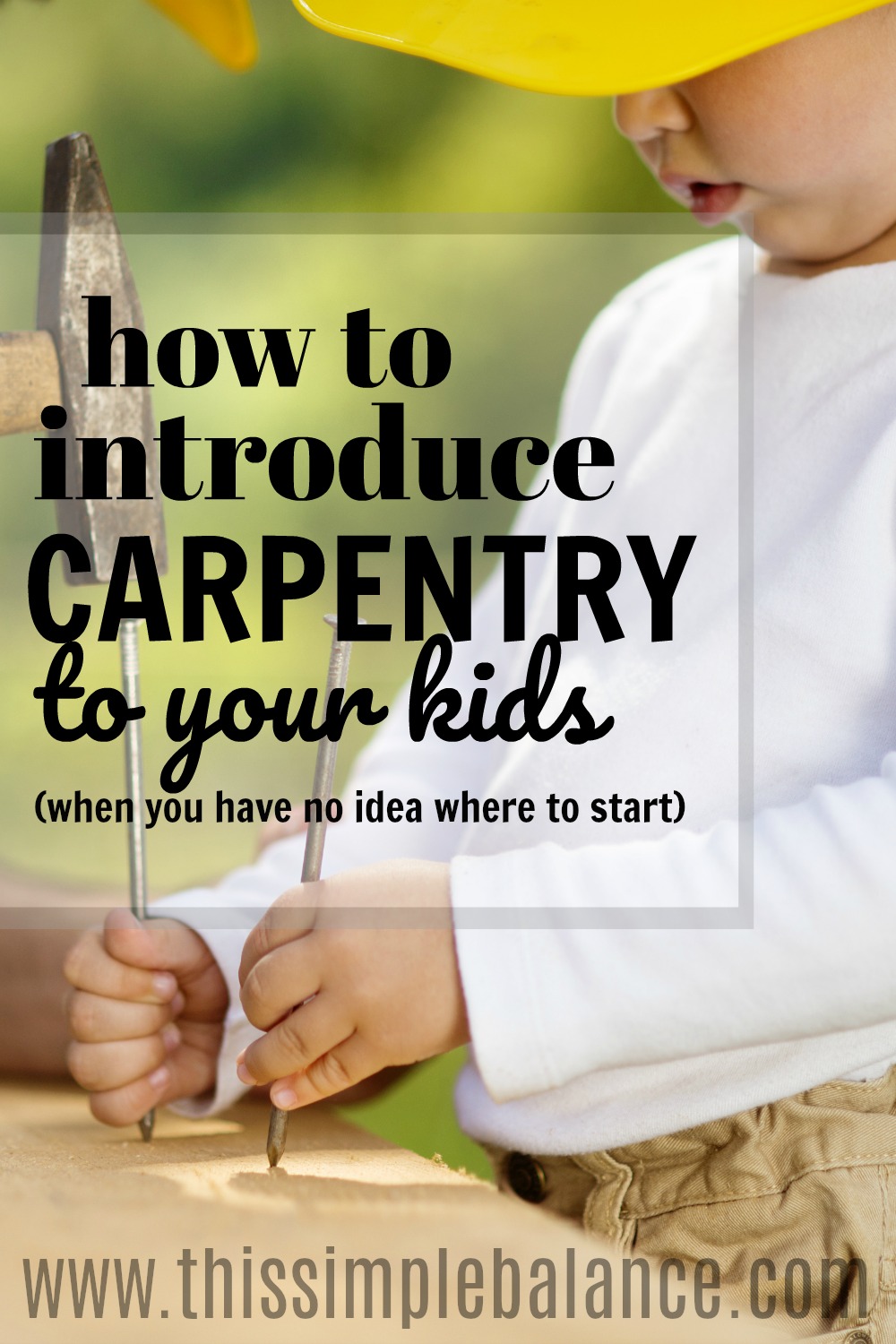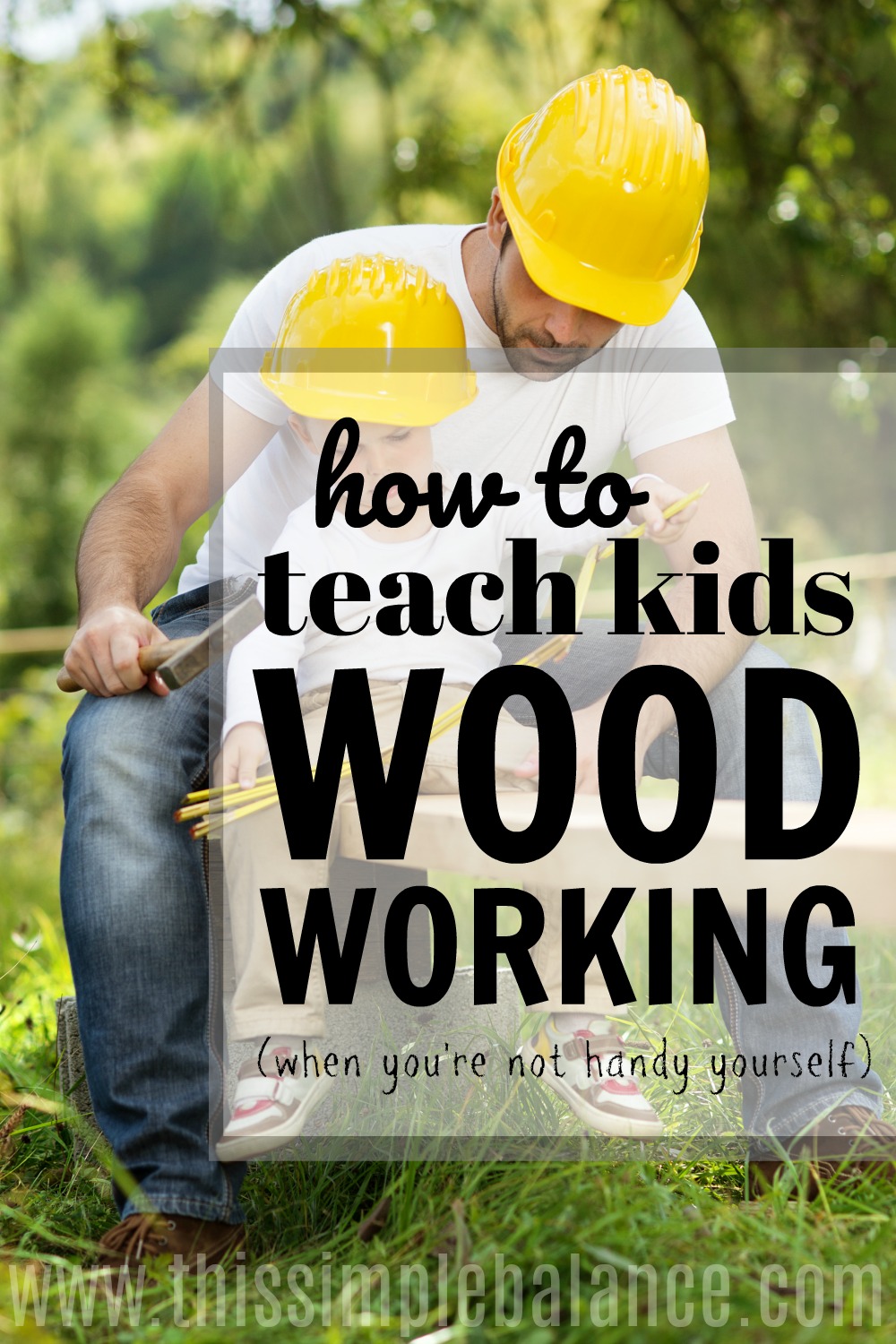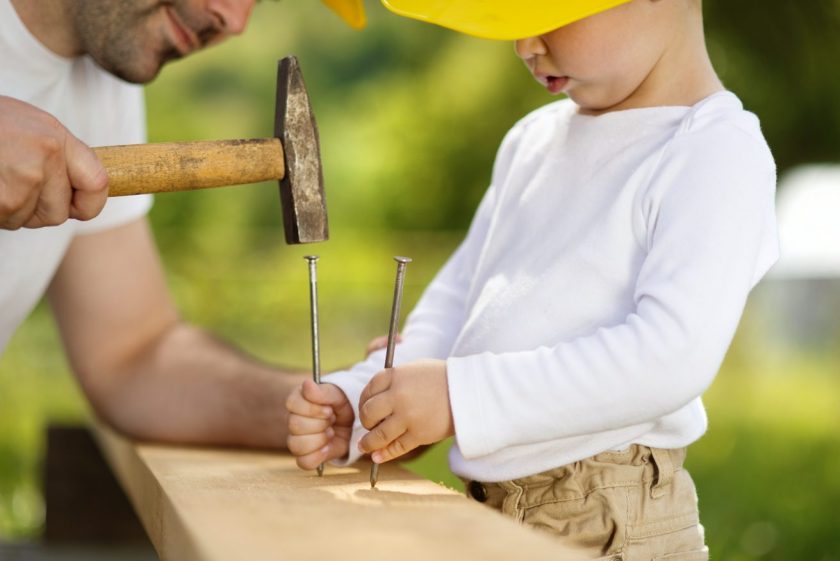Inside: Woodworking for kids doesn’t have to be intimidating! Easy project ideas and tips for the parent who is a woodworking novice.
This is a guest post from Paul Moore at Woodwork Boss.
Woodworking is an art that is not as common as it once was. Many of us parents are novice woodworkers at best. Heck, some of us have never even used a power tool!
But that shouldn’t stop us from introducing woodworking to our kids, especially when they are itching to learn. With the right guidance, even a parent with no woodworking experience can teach his kids basic woodworking skills.
How, then, do parents who have no experience with woodworking teach their kids? And why should they?
What is so special about woodworking for parents to go out of their way to teach something they know little to nothing about?
Related: Why Homeschool? The Most Compelling Reasons to Give It a Chance

The Benefits of Woodworking for Kids
THIS POST PROBABLY CONTAINS AFFILIATE LINKS. AS AN AMAZON ASSOCIATE, I EARN FROM QUALIFYING PURCHASES. YOU CAN READ OUR FULL DISCLOSURE POLICY HERE.
Woodworking can provide kids an outlet for their creativity and challenge them to tackle design problems. It teaches kids to count and measure. Using basic woodworking equipment, such as a tape measure and a speed square, kids (and their novice woodworking parents) can develop basic and marketable math skills.
Even for the pros, though, a good rule of thumb is to measure twice and cut once.
Crafting anything by hand will help kids develop problem solving skills, but woodworking simultaneously develops their motor skills. Woodworking requires you to hold, measure, cut, and connect the different wooden pieces.
Depending on what the project is, it can develop both gross and fine motor skills.
Building a project with wood often involves developing other skills as well. For instance, building a clock introduces a need to understand mechanics on a basic level, while building a piece of furniture requires learning about paints and stains.
Where to Start
When introducing woodworking to kids, or starting in on it yourself, start simple. Pick something that the kids find interesting and can serve a purpose around the house.
Little kids are notorious for always wanting to help, even if them “helping” doesn’t actually result in getting the chore done faster or better. They would love the chance to help make something for the house, and it will give them a sense of accomplishment and boost their self-esteem knowing that they helped their parents build something.
Woodworking for Kids: Simple Project Ideas
The traditional first woodworking project is a birdhouse. Pre-cut kits can be bought at hardware and craft stores that just require some simple assembly. These are good for really little kids, perhaps three or four years old, especially if you do not have a table saw, or if you feel uncomfortable using one.
If you do have access to a table saw, circular saw, or jigsaw, you can cut out the pieces yourself. Actually, you could even cut out the pieces yourself if you only have access to a handsaw — it might just take a little more initial effort.
Make sure that you, as the parent, do the actual cutting. Kids often do not have the strength to control the power tools, which could result in accidental injuries. Remember: we’re trying to help them love woodworking, not associate it with trauma!
Once the pieces are ready, the kids can assemble them, glue them together (with a little help), and paint them. You might have to lend a hand here and there, but when it comes to the color design aspect, let the kids take control. There shouldn’t be any safety hazards and they will have a greater sense of pride since they “made” it without having to abide by too many rules.
Another simple project to start with is a toolbox. This can be as simple or as complex as you want, but will give the kids a place to store their tools for the different projects and give them a space to call their own in the workshop.
While the birdhouse and toolbox will generally be kept outside or in the garage, a step-stool can be used inside the home. Paint it a cool color, use it in the bathroom or kitchen, and your kid have a useful toy and an awesome memory.
If you’re still lacking confidence, try attending a free kid’s build at your local Home Depot. They provide a free project once a month, and it can be a great safe space to get your feet wet in woodworking before attempting these simple projects at home. (Call your local Home Depot for details.)
Woodworking Safety Precautions
One of the most important things to teach your kids while introducing them to woodworking is the rules of safety. First and foremost, make sure your kids are supervised at all times.
Power tools can pose a danger even when they are not turned on, as most of them have a blade of some kind.
Keep a first aid kit around (it’s helpful to order a pre-made kit with everything already included, just in case) and make sure that everyone involved is wearing their personal protective equipment, i.e. safety glasses and no loose fitting clothing that can get caught on things.
In Closing
Woodworking can be a great bonding experience for kids and their parents, and even parents with little experience can introduce it to their kids.
Start simple, be safe, and pick an interesting and useful project.
Give woodworking a try, even if you’re unsure of yourself. Your kids might just love it, and you can give them a skill that can benefit you and yours for years to come.
Related: Relaxed Homeschool Resources & Plans 2021-2022 (Grades 6, 4, 2)
About the Author
Paul Moore loves woodworking! Woodworking is one of his true passions, and he loves to share this passion with other interested people through his website Woodwork Boss. At Woodwork Boss, you can find woodworking tips, free project plans, buying guides, and inspirational posts.


